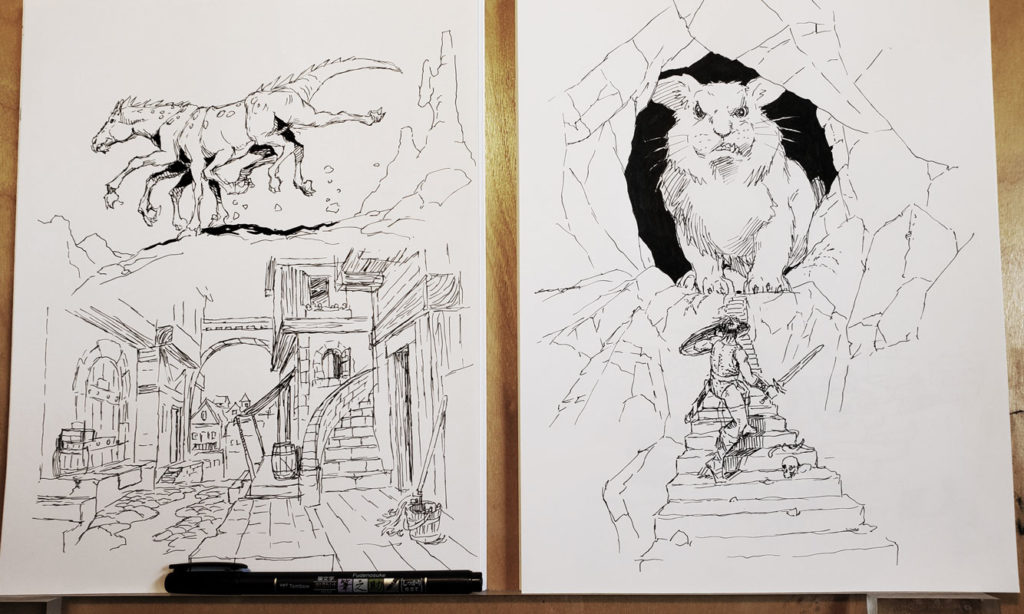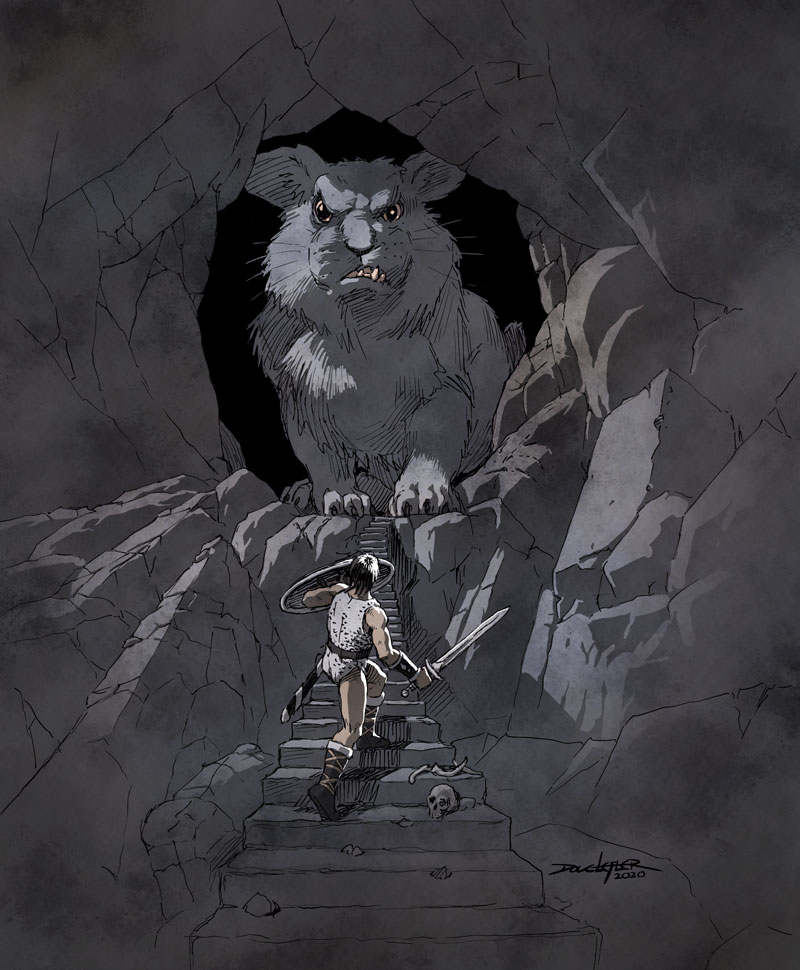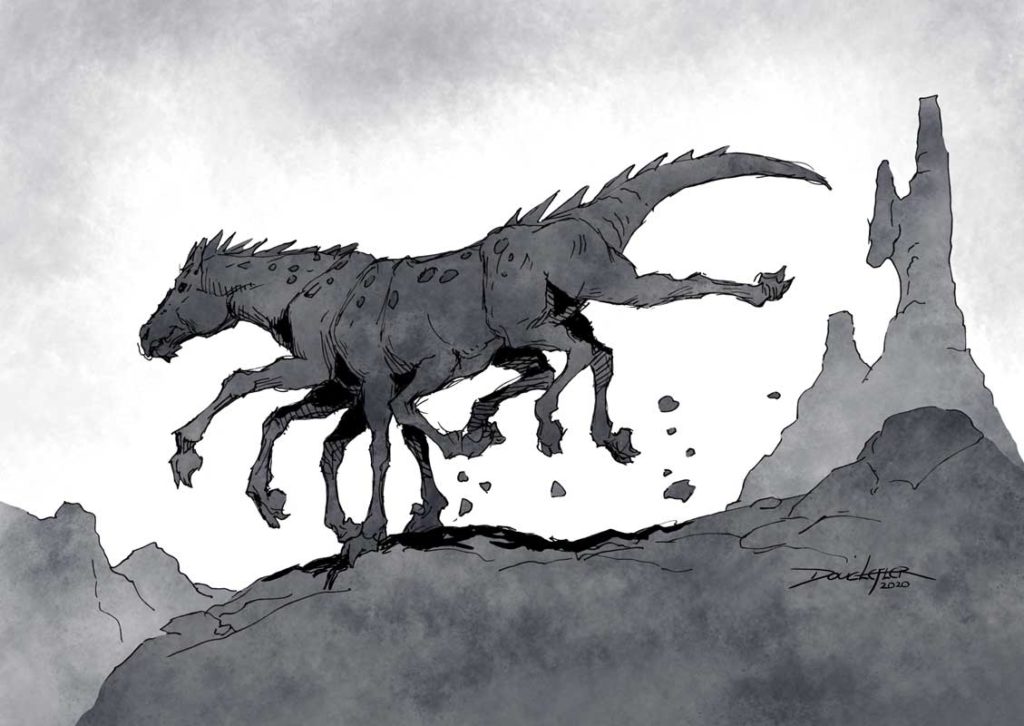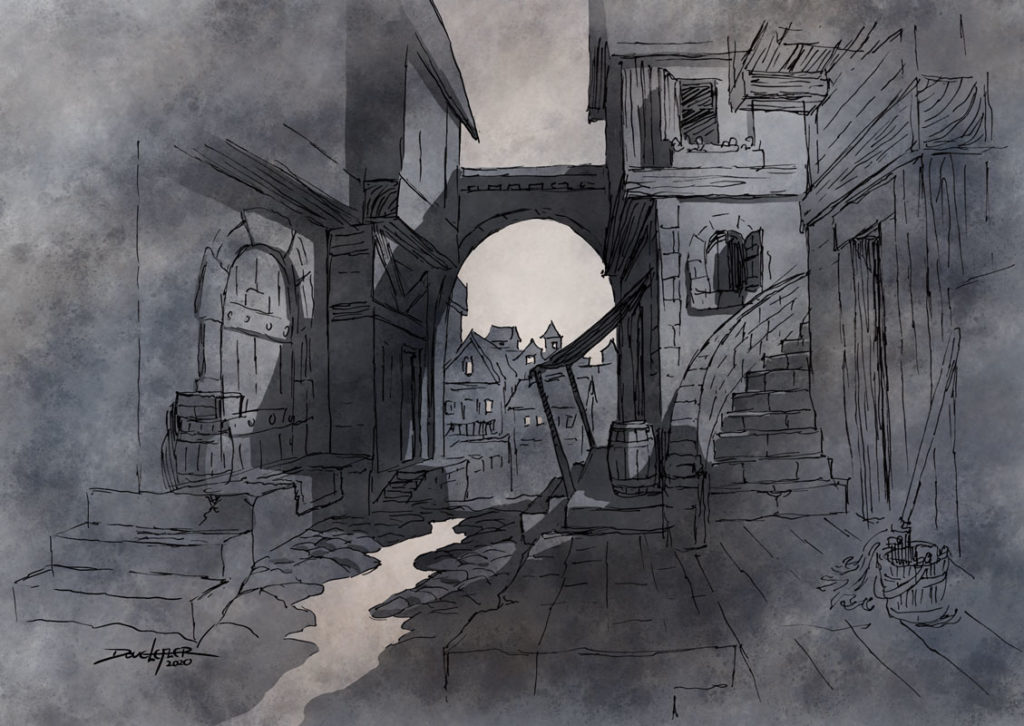This is an illustration I did for a blog titled: “Fit for a King: The Wanderer’s Guide to the Culinary Arts”, by Brady Thomas.
You can find it HERE on the Story Attic website. For any of you who want to do serious adventuring but see no reason why you should not eat well along the way.
It’s always difficult when your parents’ work takes them to a new place and there are no other children with whom you can play.
My Facebook Artist page recently topped 50k followers and I decided to launch a Patreon. Hey, if it worked for Michelangelo.
I’m new to this, so I’m asking people for suggestions on the kinds of perks they want from me, but to start I’m going to share my work process. Spoiler alert: it involves sketching a lot of ideas and throwing away most of them.

Here is a sample of where my ideas are born. I draw a lot. I have a reputation for drawing fast, but that is only because I work efficiently. A tutorial on this subject may be coming in the future, if it is a subject that interests anyone.
Below are some of the finished versions of the sketches above. Anyone who is interested in seeing my Patreon page can find it here: patreon.com/douglefler


